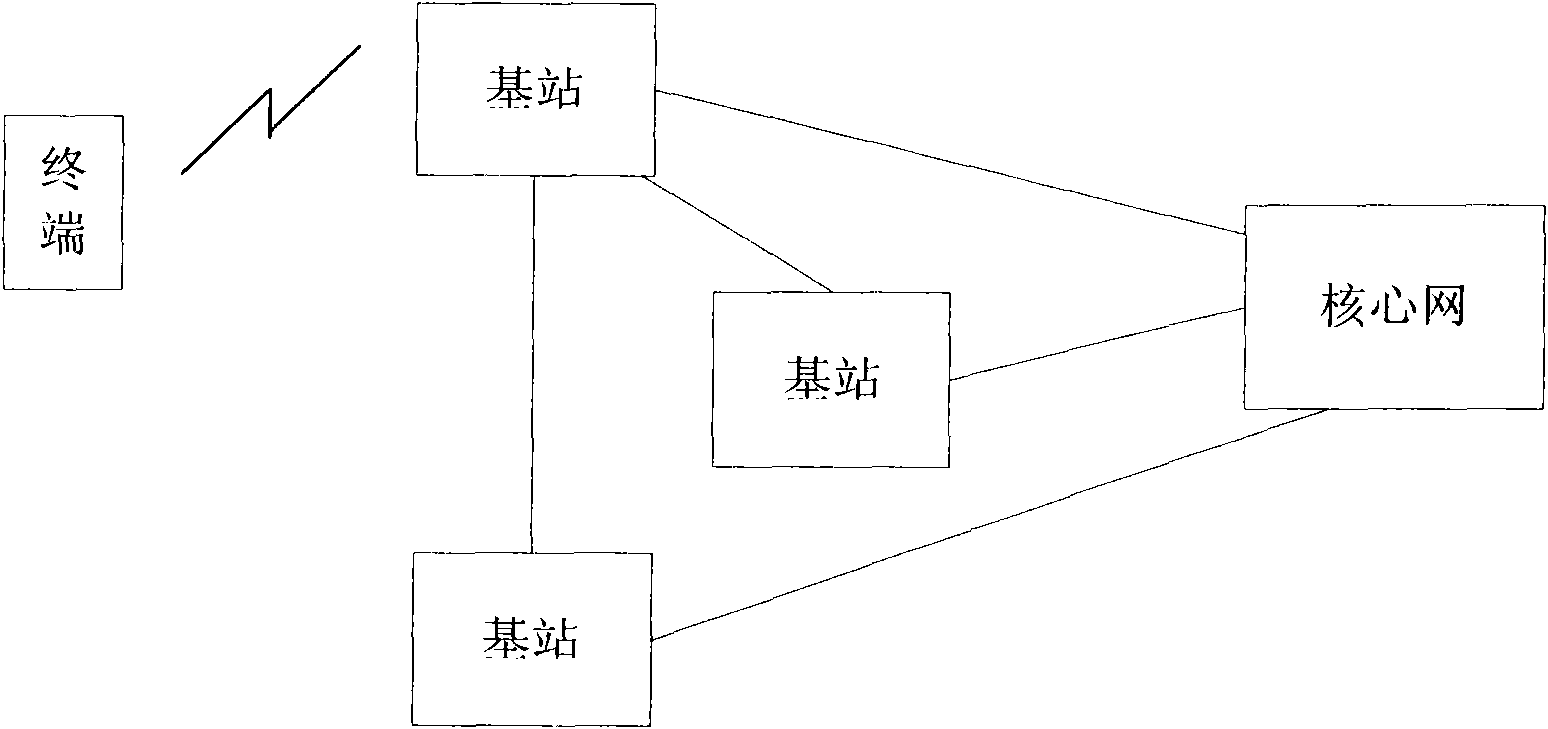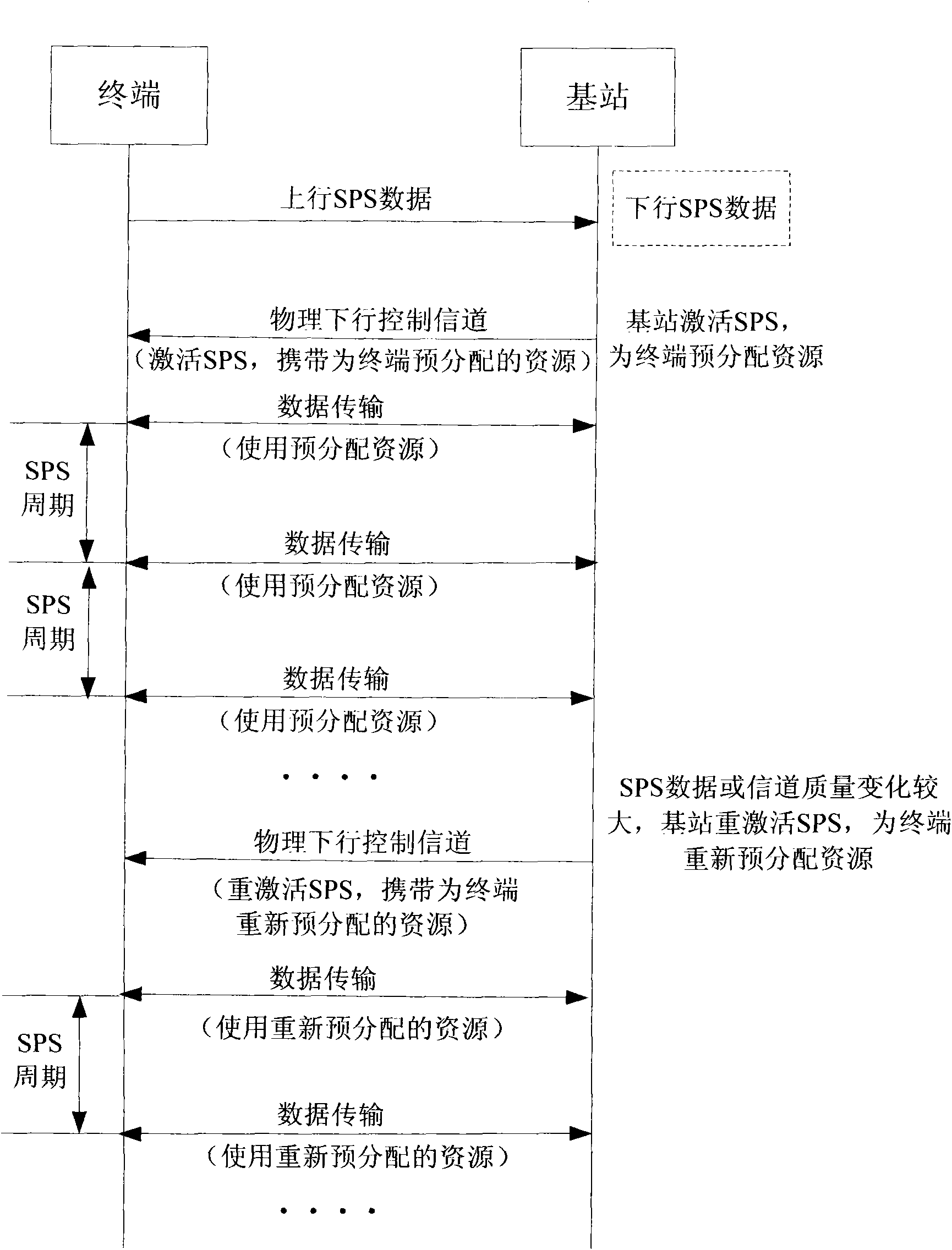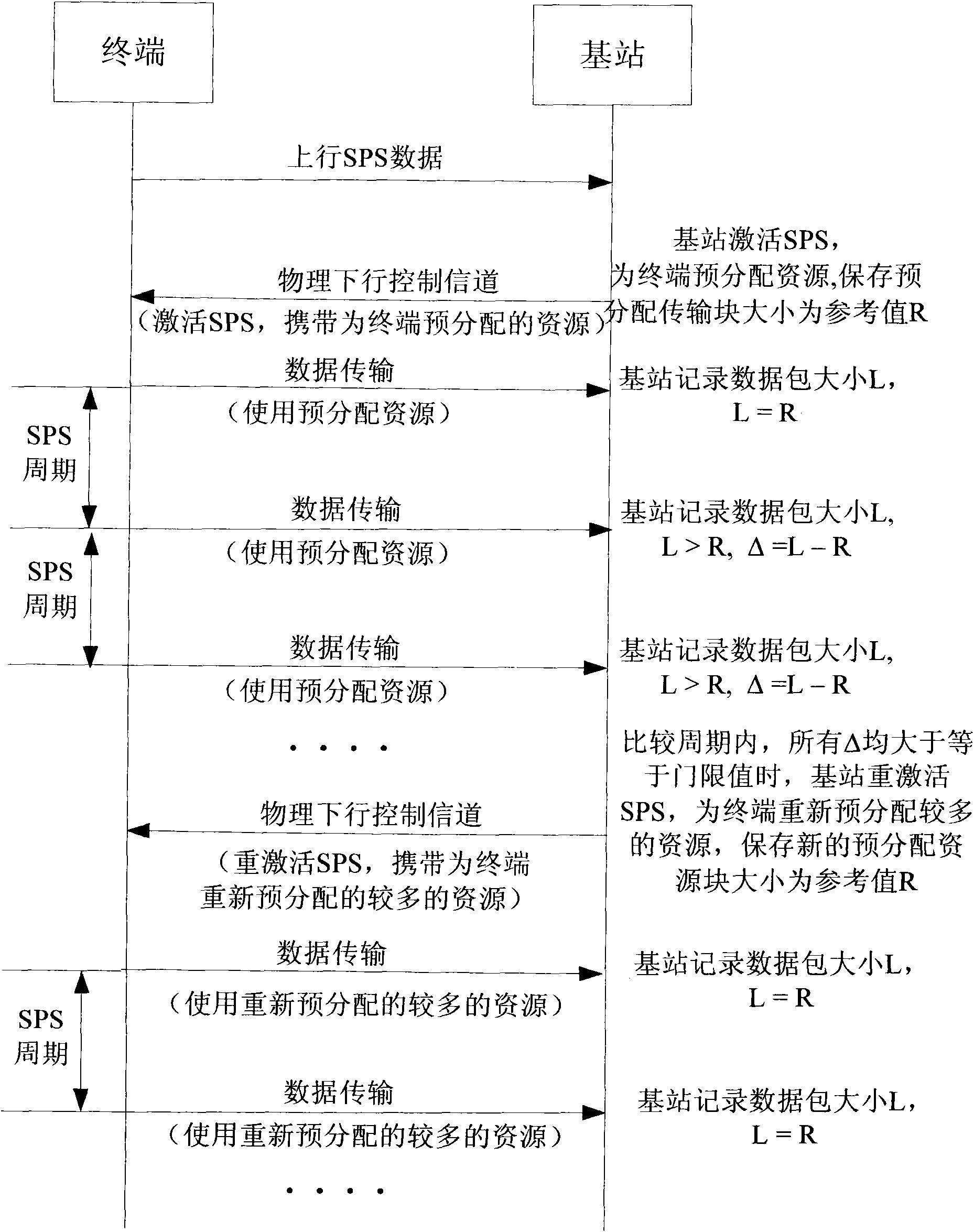Method for reactivation of semi-static scheduling, and base station thereof
A semi-static scheduling and reactivation technology, applied in the field of wireless communication, can solve problems such as eNB failure and SPS reactivation, and achieve a reasonable allocation of air interface resources
- Summary
- Abstract
- Description
- Claims
- Application Information
AI Technical Summary
Problems solved by technology
Method used
Image
Examples
Embodiment 1
[0055] Embodiment 1: When the uplink SPS data becomes larger, the SPS is reactivated.
[0056] For a UE that coexists with SPS services and dynamic scheduling services and is assigned to the same LCG, when the uplink SPS data becomes larger, the SPS reactivation process is as follows: image 3 shown, including the following steps:
[0057] Step 1.1. The eNB activates uplink semi-persistent scheduling, periodically pre-allocates resources for the UE, and saves the pre-allocated transport block size as a reference value R;
[0058] Step 1.2, UE sends uplink SPS data using pre-allocated resources in the semi-persistent scheduling period;
[0059] Step 1.3, eNB receives the complete uplink SPS data packet, records the length L of RLC SDU or PDCP PDU, and L>R, deviation Δ=L-R;
[0060] Step 1.4. During the comparison period, if the deviation Δ of all received data packets is greater than or equal to the preset threshold value, the eNB will reactivate the uplink semi-persistent sc...
Embodiment 2
[0062] Example 2: When the uplink SPS data becomes smaller, the SPS is reactivated
[0063] For a UE that coexists with SPS services and dynamic scheduling services and is allocated to the same LCG, the uplink SPS data becomes smaller, and the SPS reactivation process is as follows: Figure 4 shown, including the following steps:
[0064] Step 1.1. The eNB activates uplink semi-persistent scheduling, periodically pre-allocates resources for the UE, and saves the pre-allocated transport block size as a reference value R;
[0065] Step 1.2, UE sends uplink SPS data using pre-allocated resources in the semi-persistent scheduling period;
[0066] Step 1.3, eNB receives the complete uplink SPS data packet, records the length L of RLC SDU or PDCP PDU, and L<R, deviation Δ=R-L;
[0067] Step 1.4. During the comparison period, if the deviation Δ of all received data packets is greater than or equal to the preset threshold value, the eNB will reactivate the uplink semi-persistent sch...
PUM
 Login to View More
Login to View More Abstract
Description
Claims
Application Information
 Login to View More
Login to View More - R&D
- Intellectual Property
- Life Sciences
- Materials
- Tech Scout
- Unparalleled Data Quality
- Higher Quality Content
- 60% Fewer Hallucinations
Browse by: Latest US Patents, China's latest patents, Technical Efficacy Thesaurus, Application Domain, Technology Topic, Popular Technical Reports.
© 2025 PatSnap. All rights reserved.Legal|Privacy policy|Modern Slavery Act Transparency Statement|Sitemap|About US| Contact US: help@patsnap.com



